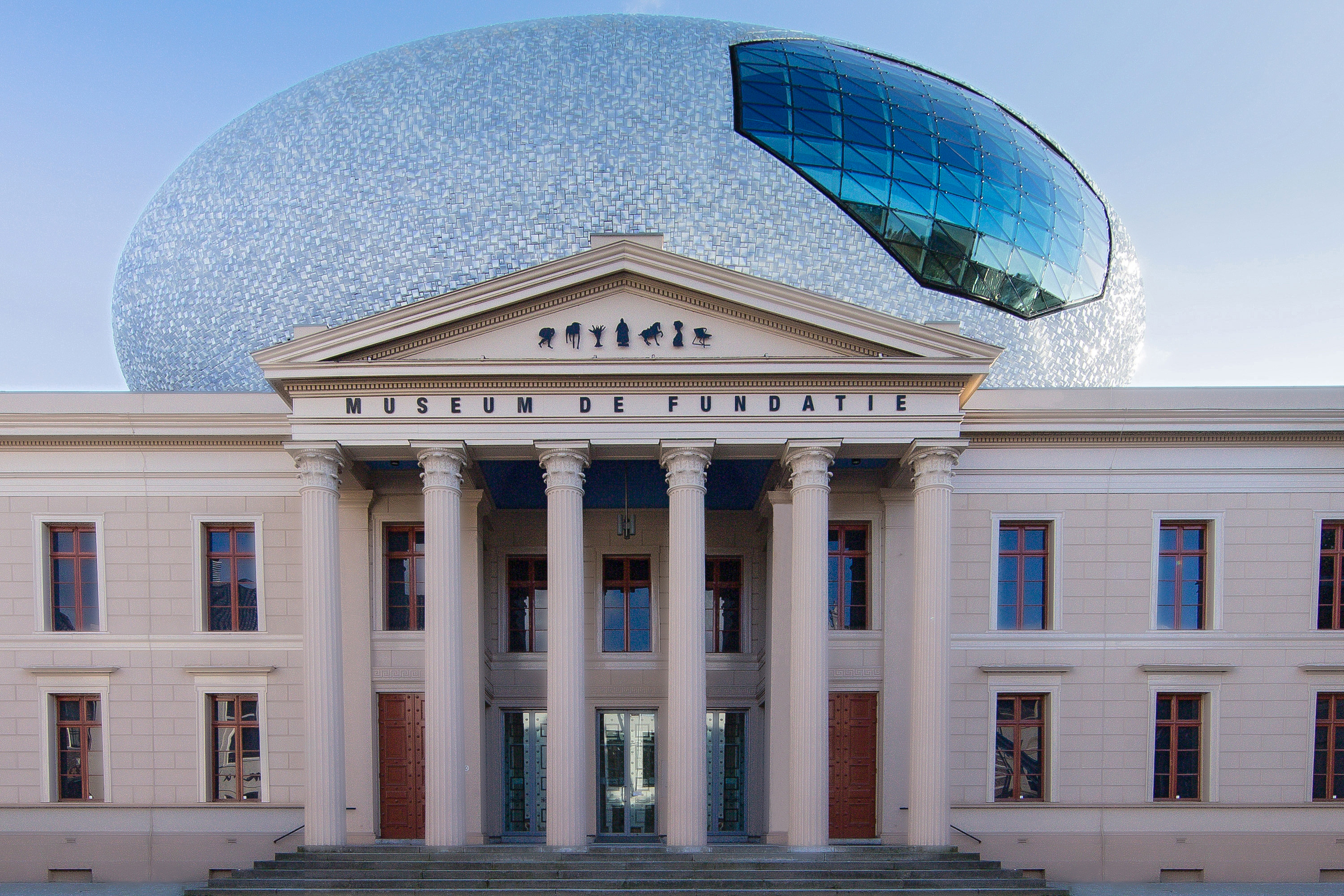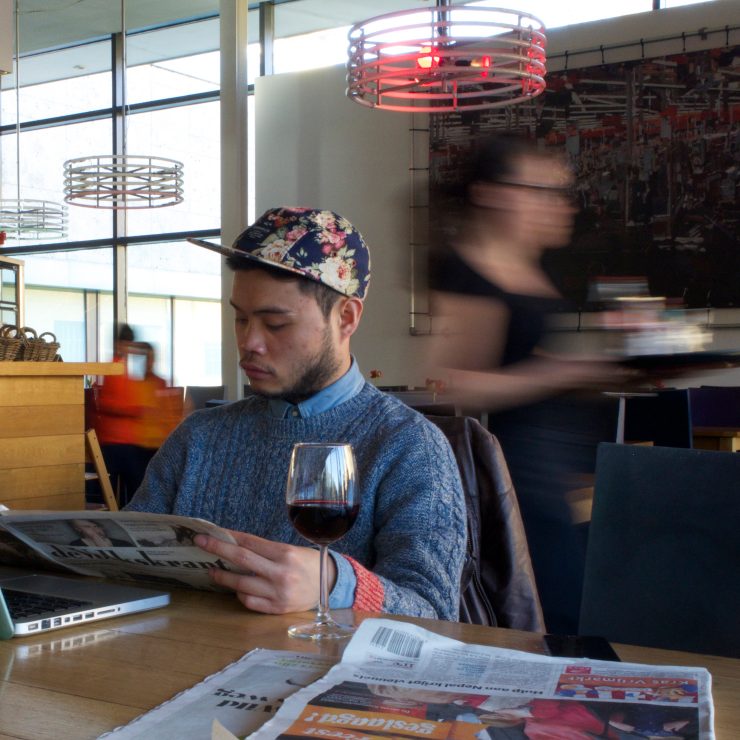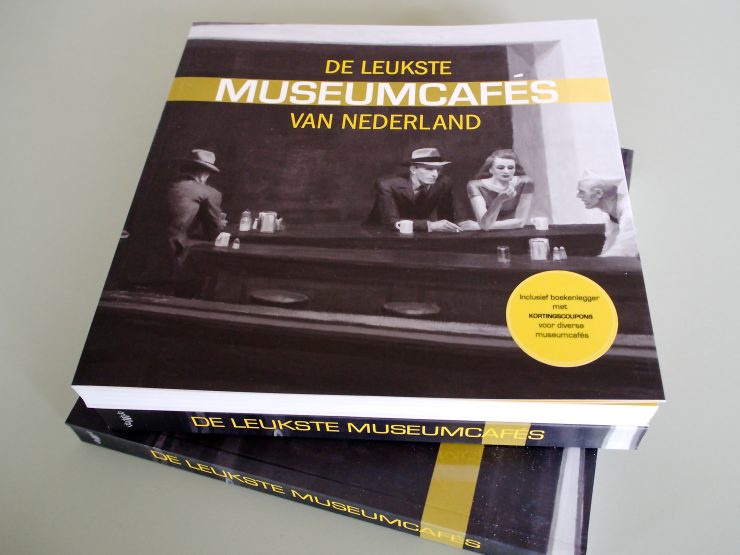
“The Netherlands’ Nicest Museum Cafes” is a new publication by De PlaatsMakers, a Dutch collective of independent professionals working to help spaces reach their full, or new, potentials through creative reconceptualization. The idea for the book—which is known locally in Dutch as “De Leukste Museumcafes van Nederland”—began with DePlaatsMakers’ cofounder Marlijn van der Hoeven, a researcher and public-sector communications expert who, despite all the complaints she heard about the subject of her study, had faith that good art and good coffee could share a roof. She told us more about her findings.
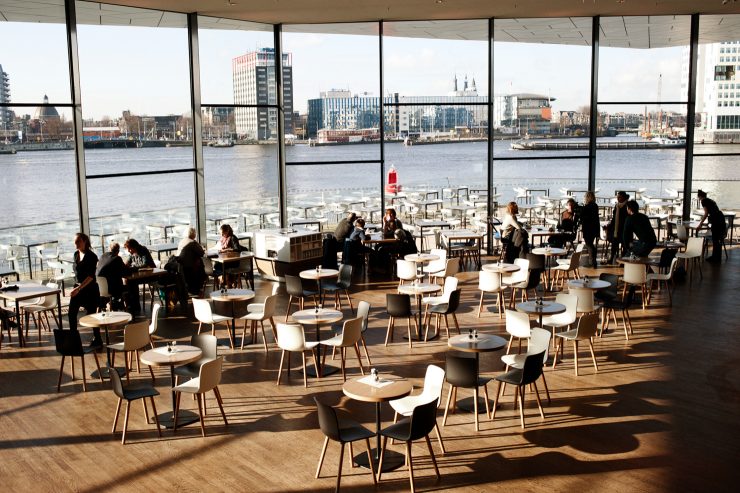
EYE Cafe. Photo by Teska Overbeeske.

Hannemas Museumbar. Photo by Marlijn van der Hoeven.
Sprudge: For this book, which you authored and your colleague Marije Weijers designed, you researched 216 museum cafes and restaurants and visited 125 of them. What prompted the project?
Van der Hoeven: We both like museums and bars. And despite a lot of cynical journalists and reviewers, we love museum cafes—their vibrancy, their public, being surrounded by art and, quite often, good coffee and passionate bartenders. We wanted to prove those critics wrong. We are, however, very aware that there are a lot of deadly boring museum bars selling awful lukewarm coffees and limp sandwiches.
Also, in recent years, museums in the Netherlands had to cut budgets, big time. I imagined they might be looking for alternative revenue sources in order not to be too subsidy-dependent in the future. One of those ways could be having an extraordinarily good cafe.
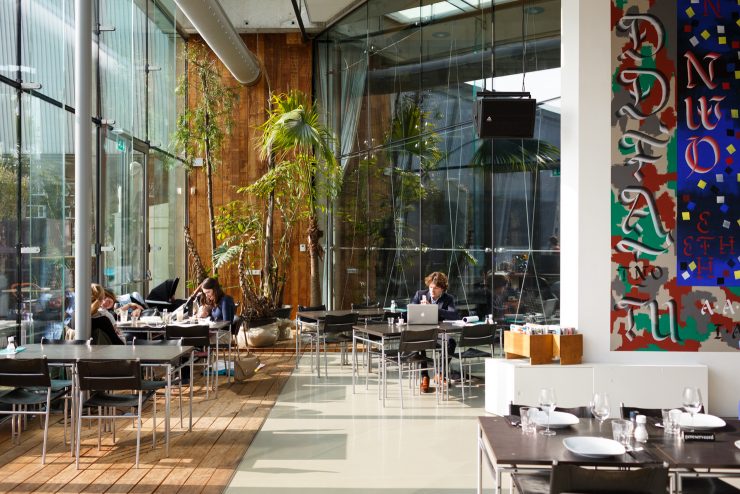
Het Nieuwe Cafe. Photo by Fred Ernst.
One of the four categories for which the book awards Top 5 distinctions is “Inspiring Work Spot”. That’s really relevant nowadays with coffee-bars serving as communal offices. What aspects of a museum cafe are crucial to inspire work?
Good vibes. Specifically, inspiration—in the form of surprising and/or exceptional art that connects the museum and the bar—diverse customers, not-too-loud music, sweet bartenders, Wi-Fi, good tables, newspapers, enough power outlets, and good coffee!
Our number one in this category is Gember at the GEM Museum in The Hague. Gember is surrounded by art: inspiring pieces in the exhibition hall connecting the cafe to the museum and sculptures in front of the terrace. They also have great tables, newspapers, nice customers, and free lemon-mint water.
Hannema’s Museumbar is located in a glittering egg-shaped wing that was recently annexed to the Museum de Fundatie in Zwolle. It’s a sharp contrast to the main neoclassical building. Looking quickly at the photo, you’d think a UFO landed on The White House. What do you think of the dramatic juxtaposition?
I like it more in real life than I do in the photo. It is confusing and different from all other museum renovations I have seen. They did not go for style. They chose to go all out—and they succeeded. But as with everything, the more you know the story behind the image, the more you love the image—in this case, the building. I love the story: the people of Zwolle collected the last funds needed for the renovation by each buying a ceramic tile. On the back of them, people were invited to write a message or an adage. So there is a big unknown and unseen part of this UFO, or cloud, as they call it. I like that idea. If you enter the museum and go to the top, in the cloud, you see in the middle of the spacious white exhibition room the white coffee bar, with the best view of Zwolle’s historic center. It is like having coffee in heaven.
At Hannema’s, the barman told you espresso was served in paper cups because a dishwashing machine, presumably necessary if ceramic cups were used, would create too much humidity for the art. Did you encounter other compromises that venues had to make due to their nature as museum cafes?
Lots of museum bars struggle with their opening hours. They sometimes want to stay open after the museum has closed, since visitors love to have a drink or a bite after leaving the exhibitions. But that often comes with a lot of security restrictions or costs, so they can’t. The same goes for an early start. An example of a place that opens before its museum is Brasserie at the Mauritshuis (The Hague museum famous for Vermeer’s “Girl with a Pearl Earring”). Here you can have barista-made coffee or breakfast starting at 8:30 a.m.
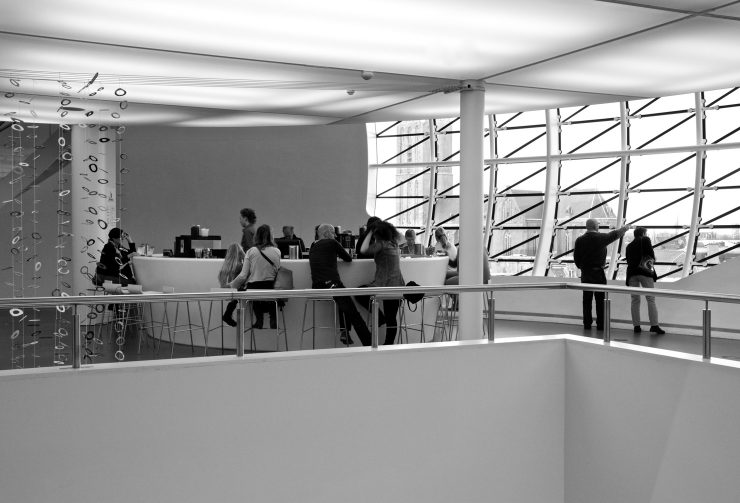
Hannema’s Museumcafe. Photo by Marlijn van der Hoeven.
A lot of cafes would probably also like to hang original art—especially since a lot of the museum depots are overloaded—but that comes with complicated climate requirements and security issues.
Some museum cafes [have found] they must go back on what were initially gutsy menus to keep their senior customers satisfied. In Holland, this means a cheese sandwich with milk or coffee, tomato soup, and a sausage roll. Not so inspiring.
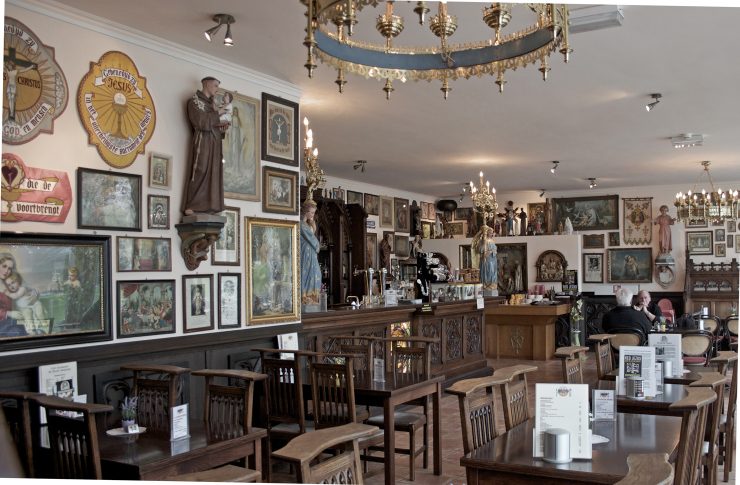
De Zwarte Madonna. Photo by Eveline Klarenaar Lucassen.
About De Zwarte Madonna in Vaals, you write: “In this café you don’t know what is museum anymore.” How does the blurred boundary between museum and cafe affect a visitor’s experience?
Visitors almost always have great choices of places to patronize after visiting an exhibition so, as a museum cafe, you must stand out! Some really do a good job. Like Het Nieuwe Café (in Rotterdam’s Het Nieuwe Instituut), they always have a surprising lineup, with different artists painting their art on the walls as well as music and dance performances. In this way, they creatively integrate the fact that they are in a museum.
At De Zwarte Madonna, the bar corresponds perfectly to the museum and is sure to prolong your cultural experience. The coffee, though, was not that good.
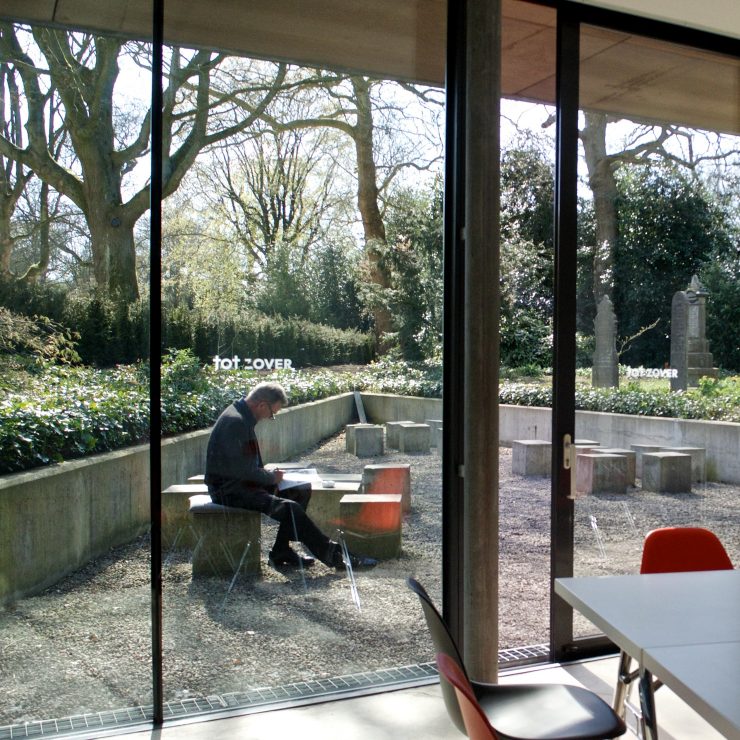
Cafe Roosenburgh. Photo by Marlijn van der Hoeven.
Cafe Roosenburgh is located in Uitvaartmuseum Tot Zover, a funeral museum sharing premises with a cemetery and crematorium in Amsterdam. That seems tricky, requiring a space that strikes a balance between validating people’s mourning and creating a welcoming atmosphere. How does the cafe manage that?
Exactly. The cafe has lovely volunteers serving you. All of that is surrounded by the graveyard’s beautiful plants and trees. The coffee, though, is crap—visitors should wait for them to get a new machine. But the cakes and bapaos are much better.
You describe Espressobar at Museum van Boijmans van Beuningen in Rotterdam as “a no-nonsense spot with an urban appearance and good stuff.” Rotterdam has a reputation for being un-frilly, what-you-see-is-what-you-get. In how far do you notice museum cafes following the aesthetic philosophy of the cities where they are located?
I think it is more and more common to offer local organic products, be they beers, coffee, sausages, or pies homemade from garden-grown berries. So that is hardly a distinction anymore. But in terms of general aesthetics, you see a lot of parallels and relationships with surroundings and context. For example, the EYE bar restaurant (in Amsterdam’s EYE film museum) exploits its panoramic view of real Amsterdam while being part of Amsterdam’s culture scene. Grand Café Maastricht Soiron, at Museum aan het Vrijthof in Maastricht, has a bon vivant, Burgundian interior and menu, fitting right in with the Maastricht way of life.
Karina Hof is a freelance journalist based in Amsterdam. Read more Karina Hof on Sprudge.
Photos courtesy of De PlaatsMakers, used with permission and thanks to the photographers.
The post Dutch Museums With Incredible Coffee Bars appeared first on Sprudge.


